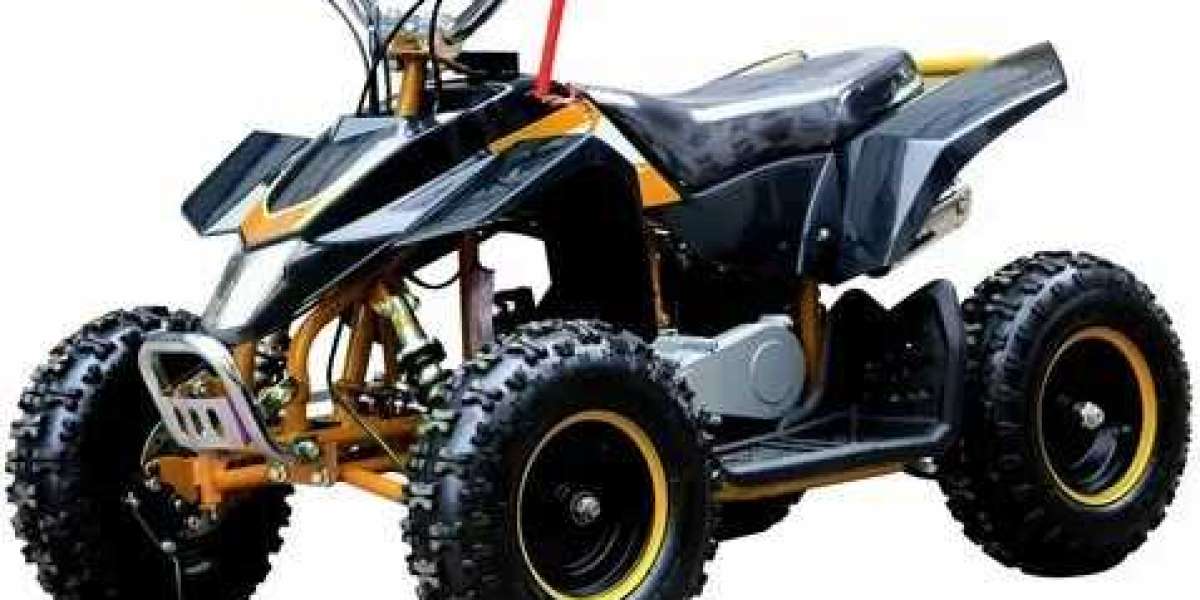When it comes to outdoor excitement, few things match the thrill of an ATV ride. But for children, this adrenaline-fueled experience comes with serious safety concerns. With sales of ATV for kids on the rise, parents are asking: how safe are they, really? To answer that, we’ve consulted pediatricians, accident researchers, safety engineers, and parents who’ve learned through experience. Here's everything you need to know before putting your child behind the handlebars.
Understanding What an ATV for Kids Really Is
Unlike adult models, an ATV for kids is typically smaller, lighter, and designed with limited speed capabilities. They're built for children as young as 6 years old, with weight and power restrictions to match their age and size.
These machines fall into several categories:
- Electric ATVs: Quieter and eco-friendly, suitable for small children.
- Gas-powered ATVs: Provide longer rides and are often used for older kids.
- Youth sport ATVs: Designed for recreational use on dirt trails and open terrain.
While they may look like toys, these machines are motor vehicles that can cause severe injuries if misused.
What the Data Says About ATV Injuries in Children
Safety experts have long raised concerns about youth ATV usage. According to the American Academy of Pediatrics (AAP), nearly 30,000 children under the age of 16 are treated in emergency rooms each year due to ATV-related injuries.
Common causes include:
- Loss of vehicle control
- Lack of protective gear
- Riding adult-sized ATVs
- Inadequate supervision
The risk of rollover and ejection is significantly higher among children, whose reaction time and motor coordination are still developing.
Age-Specific Guidelines: One Size Does Not Fit All
The Consumer Product Safety Commission (CPSC) and many manufacturers offer age-based classifications for youth ATVs:
Age Group | Recommended Engine Size |
6–11 years | Under 70cc |
12–15 years | 70–90cc |
16+ years | Over 90cc |
Choosing the right size isn’t just about safety—it affects how easily the child can maneuver and stop the ATV. Too powerful a machine can overwhelm even older kids.
Must-Have Safety Gear for Every Ride
Experts unanimously agree: protective equipment is non-negotiable. Before any ride, make sure your child wears:
- DOT-approved helmet
- Goggles or eye protection
- Gloves for better grip and hand safety
- Chest protector and elbow/knee guards
- Boots that cover the ankle
Wearing this gear drastically reduces the severity of injuries in case of accidents, especially in off-road environments.
Common Safety Mistakes Parents Make
Even well-meaning parents can put their children at risk unintentionally. Here are frequent mistakes professionals warn against:
Letting Children Ride Adult ATVs
Adult ATVs are not just larger—they're exponentially more powerful. They're difficult for kids to control and often lead to serious crashes.
Ignoring Manufacturer Guidelines
If the label says "not for riders under 12," believe it. These restrictions are based on safety testing and engineering.
Riding Without Supervision
Children should never ride alone. A responsible adult should always be present and alert, especially when children are learning.
Training Programs Are More Valuable Than You Think
Just like driving a car, riding an ATV requires skill and judgment. Enrolling your child in a certified ATV safety course can teach them how to:
- Operate the machine correctly
- Navigate uneven or unfamiliar terrain
- Recognize and avoid hazards
- Handle emergency braking
Organizations like the ATV Safety Institute offer structured programs specifically tailored to youth riders.
What Safety Experts Say About Modifying ATVs
Some parents attempt to modify an ATV for kids by removing speed limiters or adding more power. Experts strongly advise against this. Tampering with factory settings can:
- Void manufacturer warranties
- Increase the risk of injury
- Cause mechanical failures
- Lead to legal liability in case of an accident
Stick to the stock setup, especially for young or inexperienced riders.
Terrain Matters: Where Your Child Rides is Crucial
Not all outdoor spaces are suitable for ATV use. Safety experts recommend controlled environments over open or rugged areas. The safest terrains include:
- Grass fields without slopes
- Flat, dirt-covered trails with no obstacles
- Private tracks with clear boundaries
Avoid pavement, deep mud, water crossings, or areas shared with full-sized vehicles.
Legal and Insurance Factors Parents Often Overlook
In many regions, riding an ATV—even on private property—comes with legal responsibilities. Some states or countries require:
- Rider permits or training certificates
- Liability insurance for off-road vehicles
- Parental supervision for minors
- Helmet and gear regulations
Contact your local transportation or safety department to understand what applies in your area. Additionally, check whether your home or auto insurance policy covers ATV-related incidents.
Electric vs. Gas: What’s Safer for Kids?
When deciding between electric and gas-powered ATV for kids, consider the following:
Electric ATVs:
- Lower top speeds (often under 10–15 mph)
- Quieter, which means fewer distractions
- Require charging but no fuel handling
- Generally safer for smaller children
Gas-Powered ATVs:
- More power, better for older kids
- Can handle longer rides and rough terrain
- Require more maintenance
- Risk of fuel leaks if not handled properly
For kids under 10, many experts lean toward electric models for better control and lower injury potential.
How to Build a Long-Term ATV Safety Culture at Home
Safety isn’t a one-time conversation—it’s a culture. Here's how to build it:
- Set rules and enforce them consistently
- Lead by example: wear gear and follow guidelines when adults ride
- Review safety videos or manuals together
- Regularly inspect the ATV for any maintenance needs
- Reward responsible behavior and good judgment
By integrating safety into your family’s routine, kids will develop respect for the machine—and understand that fun comes with responsibility.
Final Word from the Safety Community
The thrill of riding an ATV for kids can be an unforgettable experience—but only when done safely. Pediatricians, engineers, and off-road trainers agree: proper equipment, age-appropriate vehicles, consistent supervision, and formal training aren’t just recommendations—they’re necessities.
As a parent, your job isn’t to take away the fun. It’s to guide that fun with caution, boundaries, and informed decisions. Make sure your child’s next ride is both exciting and safe by staying educated and alert.







